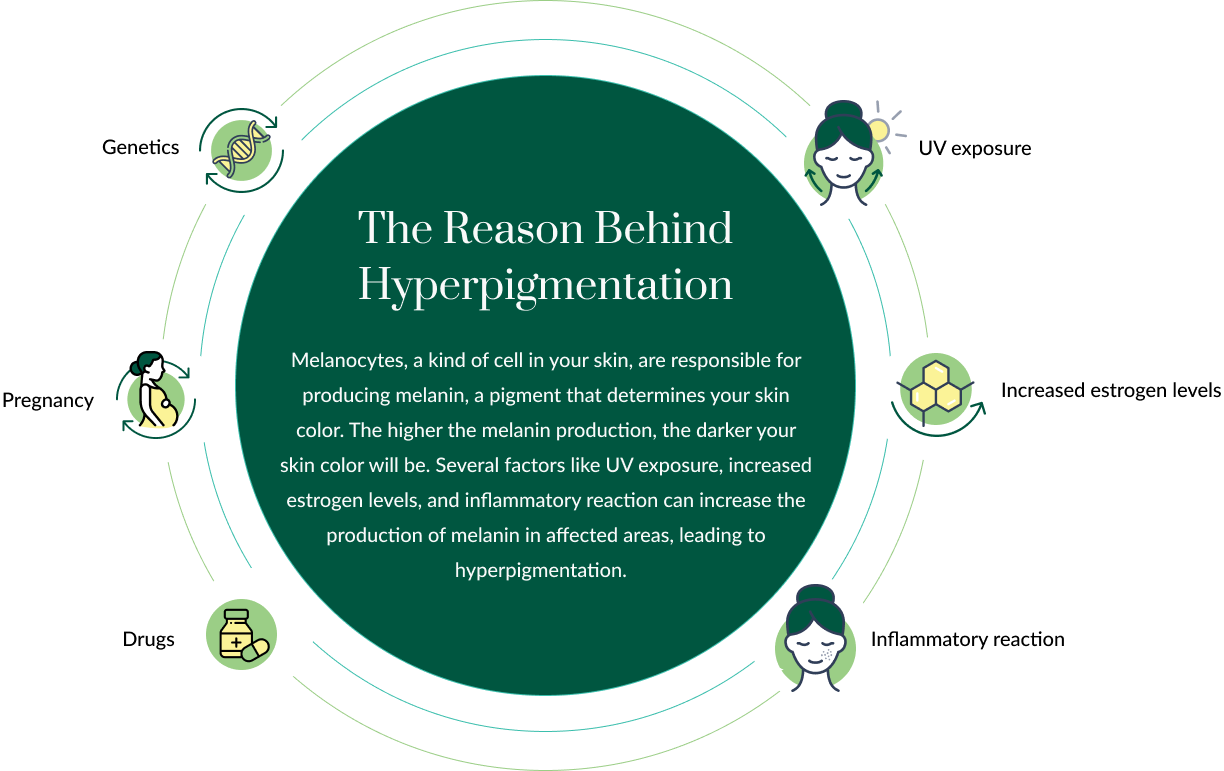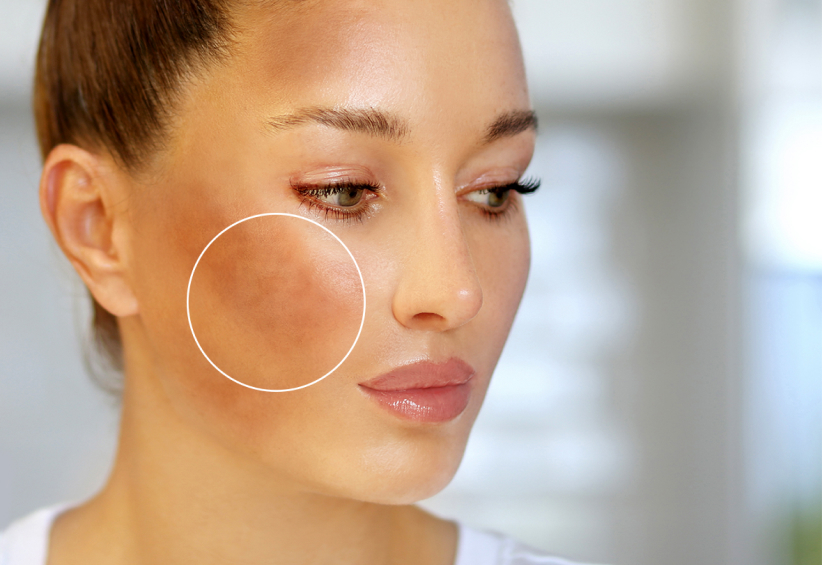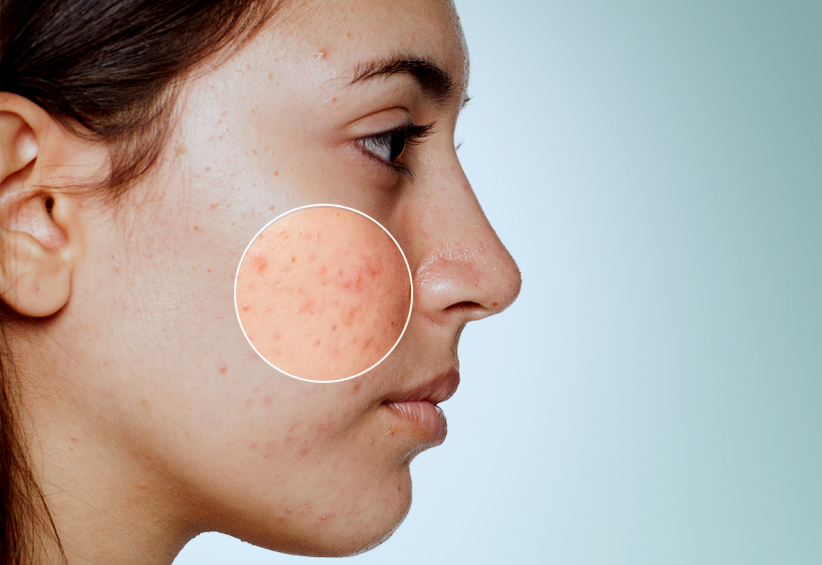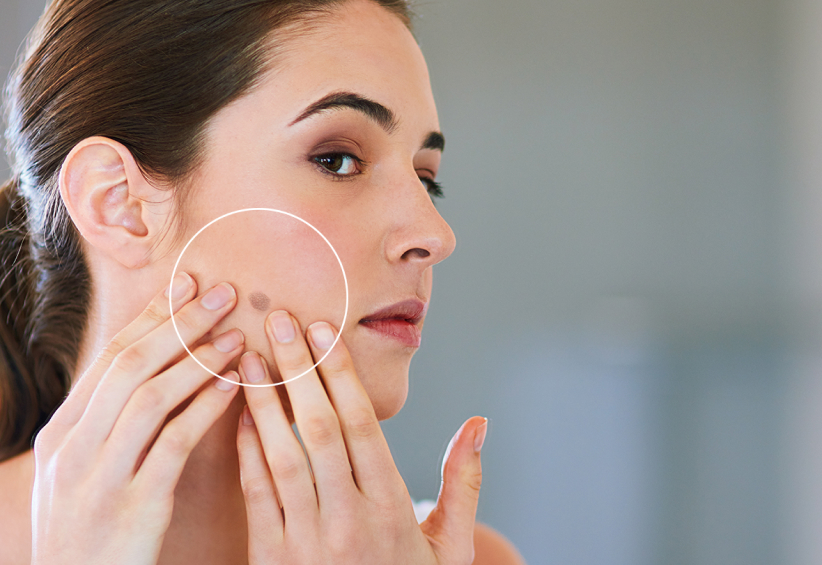
Common types of Hyperpigmentation
References:
1. Nouveau S, Agrawal D, Kohli M, Bernerd F, Misra N, Nayak CS. Skin Hyperpigmentation in Indian Population: Insights and Best Practice. Indian J Dermatol. 2016;61(5):487-95. doi:10.4103/0019-5154.190103
(Reference Text a: Variability of constitutive pigmentation around the world is well-established, with some skin tones, especially in Asian and Indian subjects, reported to be more susceptible to pigmentation disorders than other human groups. Epidemiological studies revealed that in more than 25% of cases, an association with sun exposure has been declared.)
(Reference Text b: Genetic predisposition and phototoxic drugs are known to play a major role in the development of this hypermelanosis disorder.)
(Reference Text c: Melasma, an acquired pigmentary disorder is characterized by hyperpigmented brown to grayish brown macules on the face. Exposure to UV, increased estrogen levels (observed mainly during pregnancy or use of oral contraceptives), genetic predisposition and phototoxic drugs are known to play a major role in the development of this hypermelanosis)
(Reference Text d: PIH is an acquired pigmentary skin disorder. It occurs as a result of an inflammatory reaction, induced by cutaneous diseases including acne vulgaris, atopic dermatitis, psoriasis, impetigo, lichen planus, pityriasis rosea, irritant and allergic contact, photocontact-dermatitis and insect bites as well as a complication of laser therapy. It has been shown that severity and frequency of PIH are both increased in individuals with skin of color of both genders. PIH can last from months to years and may significantly impair the quality of life of affected individuals.)
(Reference Text e: Actinic lentigines also called solar lentigines or lentigo senilis, are light brown to dark brown, spots, even-colored or reticulated patches occurring mainly in sun-exposed areas. The dorsal aspects of the hands, extensor forearms, upper trunk and face are the most commonly affected sites.)
(Reference Text f: Periorbital hyperpigmentation (POH) also known as dark circles or periorbital melanosis or periocular hyperpigmentation which surround the eyelids is a significant problem found especially in Asians. The overall prevalence of Indian women is 50% with moderate to severe dark circles on the upper eyelid and increases with age. In a study, the most common form of POH was constitutional/genetic type (n = 103, 51.5%) followed by postinflammatory type (n = 45, 22.5%) with very little knowledge about etiology)
2. Cleveland Clinic. Hyperpigmentation [Internet]. Cleveland Clinic; Accessed 2025 Aug 29. Available from: https://my.clevelandclinic.org/health/diseases/21885-hyperpigmentation
(Reference Text a: Hyperpigmentation is a common condition that makes some areas of the skin darker than others. The spots can occur in just one area of the body or all over.)
(Reference Text b: Genetics, such as a family with freckles.)
(Reference Text c: Hormone changes, such as during puberty or pregnancy)
(Reference Text d: Medications, such as oral contraceptives (birth control pills) and drugs that cause sensitivity to light.)
(Reference Text e: Sun damage (these spots are often called solar lentigines).
(Reference Text f: Injury to the skin (for example, acne, cuts or burns), which is sometimes called post inflammatory hyperpigmentation)




